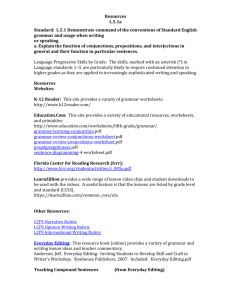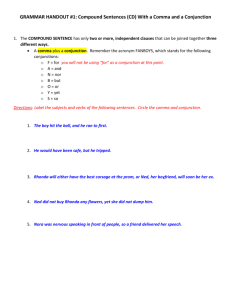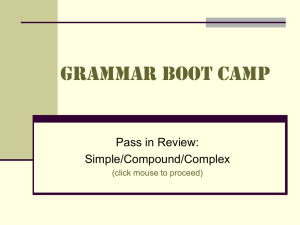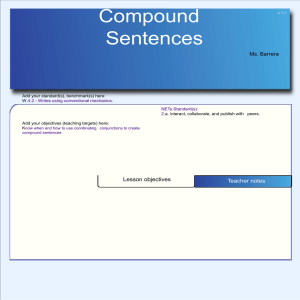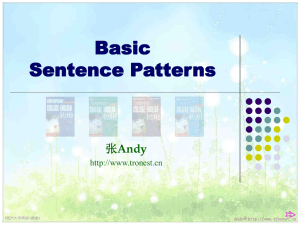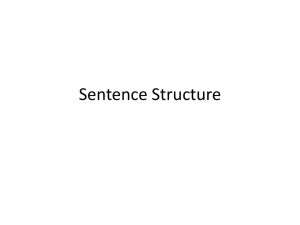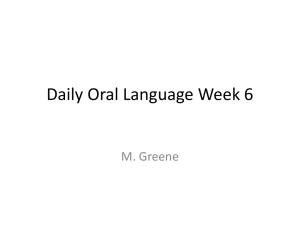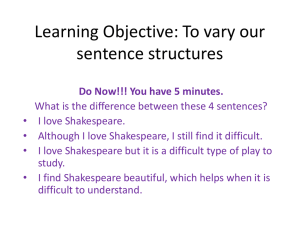Building Compound Sentences
advertisement
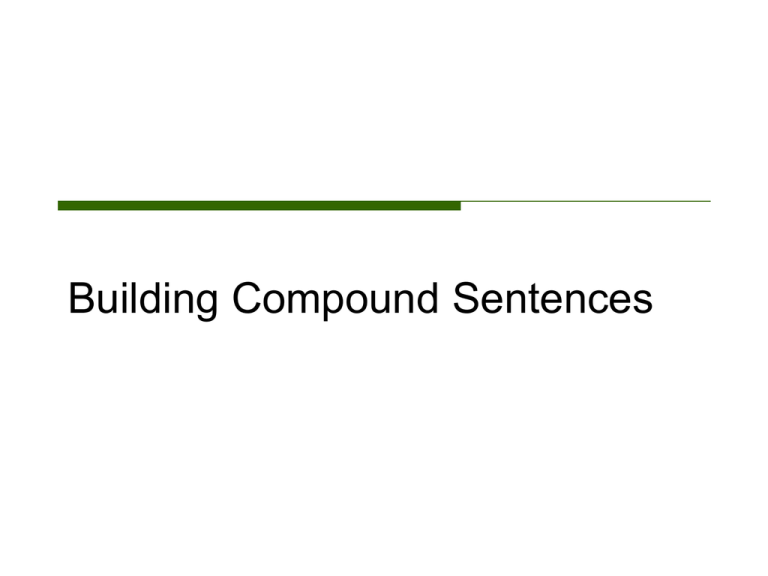
Building Compound Sentences Revising Choppy Simple Sentences Writing is my favorite class. It is easy and fun. Critical Thinking class isn’t hard. It can be enjoyable. We do not get to do grammar exercises there. I love to practice grammar. I just learned to write compound sentences. Here they are! Writing is my favorite class; it is easy and fun. Critical Thinking class isn’t hard, and it can be enjoyable, but we do not get to do grammar exercises there. I love to practice grammar; in fact, I just learned to write compound sentences, so here they are! Three Ways to Make Compound Sentences o Join two sentences with a comma and a coordinating conjunction (FANBOYS): for, and, nor, but, or, yet, so. o Join two complete sentences with a semicolon. o Join two complete sentences with a semicolon and a conjunctive adverb or transitional expression. To get rid of short, choppy sentences, call in the FANBOYS! Punctuation with FANBOYS o Put commas before FANBOYS, not after. o Use a comma when there is a complete sentence on both sides of the FANBOYS. I love writing essays, and I love studying grammar. Punctuation with FANBOYS o Don’t use a comma before a FANBOYS word if only a piece of a complete sentence appears on either side o I love writing essays and studying grammar. unless the items being joined by the FANBOYS word are part of a series of three or more items. o I love writing essays, studying grammar , and revising my work. Punctuation with Semicolons ; o Semicolons act like periods; they bring a sentence to a stop. o Semicolons don’t act like commas. Semicolons are much stronger than commas. They can keep two whole sentences apart! Conjunctive Adverbs o A conjunctive adverb is a word that connects two parts of a compound sentence together while also modifying the part of the sentence where it is found. o I wanted to cash my check; unfortunately, the bank was closed for the day. o Some common examples include also, however, instead, meanwhile, and nevertheless, and there are many others. Transitional Expressions o Transitional expressions are phrases that show relationships between the parts of a compound sentence. o I could use a job; on the other hand, I like having free time. o Some common examples include of course, in conclusion, as a result, and in fact. There are many others. Use a semicolon and a conjunctive adverb or transitional expression. o When you’re joining two complete sentences this way, be sure to put a semicolon BEFORE the joining word and a comma AFTER. o We were able to meet the proposal’s deadline; however, we had to deliver it by hand. o I know my grammar perfectly; therefore, I never worry about my essay grades. So now you know all you need to know about making compound sentences! o To join two complete sentences, use a comma plus one of the FANBOYS: For, And, Nor, But, Or, Yet, So. o To join two complete sentences, use a semicolon all by itself. o To join two complete sentences, use a semicolon and a conjunctive adverb or transitional expression. To review compound sentences, see Chapter 10.
